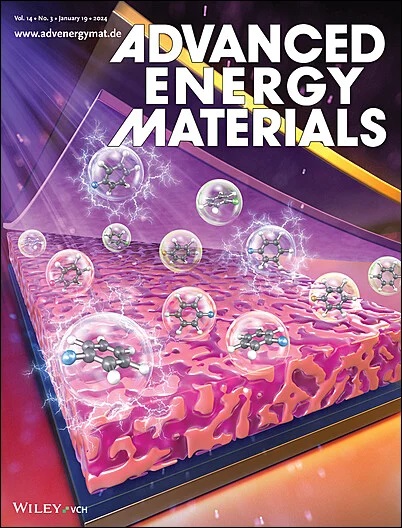Breaking the Upper Limit of Substitution Concentration in Li Argyrodite Solid Electrolytes Using a Single-Solvent-Mediated Approach
IF 24.4
1区 材料科学
Q1 CHEMISTRY, PHYSICAL
引用次数: 0
Abstract
Although raising the substitution concentration of aliovalent cations in Li argyrodite solid electrolytes could boost solid-state battery performance, surpassing the known substitution limit has not been attempted. In this study, the upper substitution limit of a Li6+xP1−xSixS5Br solid electrolyte is increased using a single-solvent-mediated approach. The limit attained through this method is ≈40%, whereas that achieved through solid-state ball milling is ≈30%. This result is validated by monitoring variations in the interplanar distance, Raman shift, and ionic conductivity with respect to the substitution level. The ionic conductivity of Li6.4P0.6Si0.4S5Br is as high as ≈3.1 mS cm−1, exceeding that accomplished through ball milling. The enhanced limit is ascribed to the reduced particle size, which leads to an increased surface-area-to-volume ratio of the particles. This interpretation is supported by a theoretical formalism developed based on substituent accumulation within the space-charge layers, which predicts how the technical limit depends on the surface-volume fraction. A Li// Li6.4P0.6Si0.4S5Br//Li symmetric cell demonstrates excellent Li plating and stripping over extended cycling. A full cell incorporating Li6.4P0.6Si0.4S5Br retains ≈67% (96 mAh g−1) of its initial capacity (143 mAh g−1) after 50 cycles at 0.2 C, and delivers 76 mAh g−1 at 1 C.

求助全文
约1分钟内获得全文
求助全文
来源期刊

Advanced Energy Materials
CHEMISTRY, PHYSICAL-ENERGY & FUELS
CiteScore
41.90
自引率
4.00%
发文量
889
审稿时长
1.4 months
期刊介绍:
Established in 2011, Advanced Energy Materials is an international, interdisciplinary, English-language journal that focuses on materials used in energy harvesting, conversion, and storage. It is regarded as a top-quality journal alongside Advanced Materials, Advanced Functional Materials, and Small.
With a 2022 Impact Factor of 27.8, Advanced Energy Materials is considered a prime source for the best energy-related research. The journal covers a wide range of topics in energy-related research, including organic and inorganic photovoltaics, batteries and supercapacitors, fuel cells, hydrogen generation and storage, thermoelectrics, water splitting and photocatalysis, solar fuels and thermosolar power, magnetocalorics, and piezoelectronics.
The readership of Advanced Energy Materials includes materials scientists, chemists, physicists, and engineers in both academia and industry. The journal is indexed in various databases and collections, such as Advanced Technologies & Aerospace Database, FIZ Karlsruhe, INSPEC (IET), Science Citation Index Expanded, Technology Collection, and Web of Science, among others.
 求助内容:
求助内容: 应助结果提醒方式:
应助结果提醒方式:


